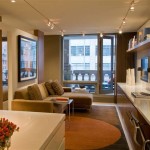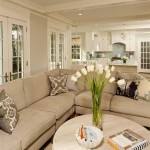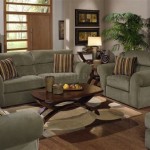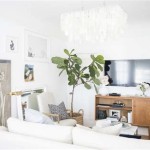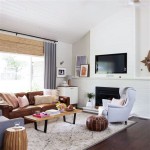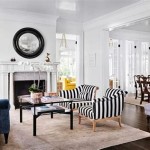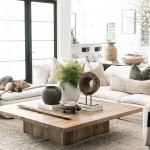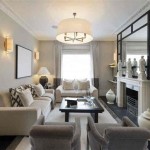Designing a Living Room with a Maroon Sofa
A maroon sofa can serve as a striking focal point in a living room. Its rich, deep hue possesses the ability to impart both warmth and sophistication to an interior space. Successfully incorporating a maroon sofa into a living room design requires careful consideration of color palettes, textures, and overall style. The following article provides a comprehensive guide to conceptualizing and executing a living room design with a maroon sofa as its centerpiece.
Understanding the Psychology of Maroon
Maroon, a shade of dark reddish-brown, carries significant psychological weight. It is often associated with sophistication, power, ambition, and confidence. It can also evoke feelings of warmth, comfort, and even luxury. In interior design, maroon can create a sense of stability and groundedness. However, it is crucial to use maroon judiciously, as an overabundance of the color can sometimes feel overwhelming or oppressive. The key is to balance the depth of maroon with lighter, more neutral tones and strategically placed accents to prevent the room from appearing too dark or heavy.
When employing maroon in interior design, it is also beneficial to consider the specific shade of maroon being used. Lighter, more reddish maroons will feel warmer and more inviting, while darker, more brown-toned maroons will appear more formal and sophisticated. The choice of shade should align with the overall design aesthetic and the desired mood of the living room.
Complementary Color Palettes for a Maroon Sofa
Selecting the appropriate color palette is paramount when designing a living room around a maroon sofa. The goal is to create a harmonious and visually appealing space that highlights the sofa's beauty without allowing it to dominate. Several color combinations work particularly well with maroon, each offering a distinct aesthetic.
Neutral Palette: Pairing a maroon sofa with a neutral palette is a classic and timeless approach. Colors such as beige, cream, ivory, and gray provide a sophisticated backdrop that allows the maroon sofa to stand out as a statement piece. These neutral tones can be implemented in the walls, flooring, and other large furniture items. To add depth and visual interest, incorporate textures such as woven rugs, linen curtains, and knitted throws. Accents in metallic tones like gold or brass can further enhance the luxurious feel of the space. This color scheme is popular for its versatility and calming effect.
Earthy Tones: For a warmer and more inviting atmosphere, consider pairing a maroon sofa with earthy tones like olive green, terracotta, and mustard yellow. These colors complement the richness of maroon and create a sense of natural harmony. Green plants further enhance this connection to nature, adding freshness and vitality to the space. Wooden furniture and natural materials like wicker and rattan are excellent choices for this palette, reinforcing the organic feel. This color palette is often implemented in rustic or bohemian-inspired designs.
Jewel Tones: For a bolder and more dramatic effect, explore jewel tones such as emerald green, sapphire blue, and amethyst purple. These colors create a rich and opulent ambiance that is well-suited to formal living rooms. When using jewel tones, it is important to maintain a balance to prevent the space from feeling overwhelming. Use maroon as the dominant color and incorporate the other jewel tones as accents in pillows, artwork, and decorative objects. Metallic accents, particularly gold, can amplify the luxurious feel. This palette is often implemented in art deco or eclectic designs.
Monochromatic Palette: A monochromatic color scheme, utilizing different shades and tints of maroon, can create a sophisticated and cohesive look. This involves pairing the maroon sofa with lighter shades of red, pink, and brown. To prevent the room from feeling monotonous, it is crucial to introduce texture and variation in materials. Use different fabrics, such as velvet, leather, and linen, to add depth and interest. This palette requires careful planning to avoid a flat, uninspiring outcome.
Integrating Texture and Materials
Texture plays a critical role in enhancing the visual appeal of a living room with a maroon sofa. By incorporating a variety of textures, the space becomes more inviting and engaging. The choice of materials should complement both the color palette and the overall design style.
Fabrics: Different fabrics can significantly alter the look and feel of a maroon sofa. Velvet, with its plush and luxurious texture, adds a touch of elegance and sophistication. Leather offers a more durable and masculine aesthetic, while linen provides a casual and relaxed feel. When selecting fabrics for pillows, throws, and curtains, consider contrasting textures to create visual interest. For example, pairing a velvet sofa with linen pillows and a knitted throw can create a balanced and inviting space. The choice of fabric also affects the maintenance requirements; velvet requires more delicate care than linen, for instance.
Rugs: The rug serves as an anchor for the living room and can significantly contribute to the overall aesthetic. A neutral rug in a natural fiber like jute or sisal provides a subtle backdrop that allows the maroon sofa to shine. An area rug with a geometric pattern or a subtle texture can add visual interest without overwhelming the space. For a more luxurious feel, consider a wool or silk rug with a deep pile. The size of the rug is also an important consideration. It should be large enough to accommodate all the furniture in the seating area, creating a cohesive and grounded space.
Wood: Wood tones can greatly influence the warmth and character of the living room. Light woods like birch and maple create a bright and airy feel, while dark woods like walnut and mahogany provide a more formal and sophisticated ambiance. The choice of wood should complement the color palette and the overall design style. For a rustic or bohemian-inspired living room, consider using reclaimed wood or raw wood finishes. For a more contemporary space, sleek and polished wood finishes are a better choice. The wood tones should also be considered in relation to the flooring material.
Metal: Metallic accents can add a touch of glamour and sophistication to a living room with a maroon sofa. Gold and brass tones complement the warmth of maroon and create a luxurious feel, while silver and chrome offer a more modern and sleek aesthetic. Metal can be incorporated through lighting fixtures, coffee tables, decorative objects, and picture frames. It is important to use metal sparingly to avoid overwhelming the space. A few well-placed metallic accents can add just the right amount of sparkle and shine.
Natural Elements: Incorporating natural elements like plants, stones, and wood can create a more organic and welcoming atmosphere. Plants add life and freshness to the space, while stones and wood provide texture and visual interest. Consider adding a large potted plant in a corner, arranging a collection of succulents on a coffee table, or displaying a piece of driftwood on a shelf. These natural elements can help to soften the formality of a maroon sofa and create a more relaxed and inviting environment.
Lighting Strategies for a Maroon Sofa
Effective lighting is crucial for creating a well-designed living room with a maroon sofa. The right lighting can enhance the sofa's color, create a warm and inviting ambiance, and highlight the room's best features. A combination of natural and artificial light sources is typically the most effective approach.
Natural Light: Maximize natural light by keeping windows unobstructed and using light-colored window treatments. Sheer curtains or blinds allow natural light to filter into the room while providing privacy. Natural light is essential for showcasing the true color of the maroon sofa and creating a bright and airy atmosphere. Consider adding mirrors to reflect natural light and further brighten the space. Pay attention to the direction of sunlight and adjust window treatments accordingly to avoid glare and excessive heat.
Ambient Lighting: Ambient lighting provides overall illumination for the room. Recessed lighting, chandeliers, and pendant lights are common choices for ambient lighting. Choose fixtures that complement the style of the living room and provide sufficient light to illuminate the entire space. Dimmers allow for adjusting the brightness of the ambient lighting to create different moods. For a living room with a maroon sofa, consider using warm-toned light bulbs to enhance the sofa's warmth and create a cozy atmosphere. Avoid harsh, cool-toned light bulbs, which can make the maroon sofa appear dull and lifeless.
Task Lighting: Task lighting provides focused light for specific activities, such as reading or working. Floor lamps and table lamps are the most common types of task lighting. Place a floor lamp near the maroon sofa to provide light for reading or relaxing. Choose lamps with adjustable arms or shades to direct the light where it is needed most. Task lighting should be functional and stylish, complementing the overall design of the living room. Consider the height and placement of the lamps to ensure they provide adequate light without creating glare or shadows.
Accent Lighting: Accent lighting highlights specific features of the living room, such as artwork, architectural details, or the maroon sofa itself. Track lighting, spotlights, and wall sconces are common choices for accent lighting. Use accent lighting to draw attention to the maroon sofa and create a focal point in the room. Consider placing a spotlight above the sofa to highlight its texture and color. Accent lighting can also be used to create dramatic effects and add depth to the space. Experiment with different lighting angles and intensities to achieve the desired effect.
Layering Light: The most effective lighting schemes combine all three types of lighting – ambient, task, and accent – to create a balanced and well-illuminated space. Layering light allows for adjusting the lighting to suit different activities and moods. Consider using a dimmer switch to control the intensity of the ambient lighting, and incorporate task lighting for reading and accent lighting for highlighting the maroon sofa and other features of the room. A well-layered lighting scheme enhances the beauty of the maroon sofa and creates a comfortable and inviting living room.

10 Burgundy Couch Ideas Living Room Decor

Pantone S 2024 Color Of The Year

Design Dilemma Decorating Around The Burgundy Sofa My Old Country House

Design Dilemma Decorating Around The Burgundy Sofa My Old Country House

10 Tips To Design A Red Living Room

18 Maroon Living Room Furniture And Interior Design Ideas

100 Chic Burgundy Sofa Ideas For Living Room Decorations Color Decor In

Maroon Sofa With Black Side Tables And Table Lamps Burgundy Living Room Style Art Deco 3d Render Premium Photo

Dotnet Sofa Couch In Maroon Color By E Furniture Furrniture

47 Sumptuous Burgundy Home Decor Ideas Shelterness

